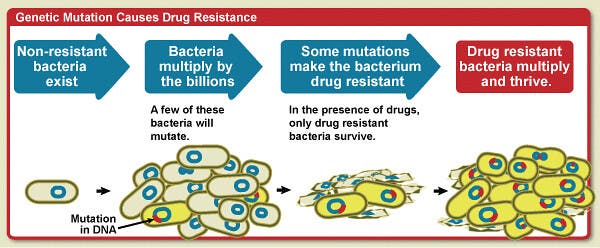A new report concludes that growing antibiotic resistance in animals threatens not only animal and human health — but even food security.

In recent years, antibiotic resistance has emerged as one of the biggest threats to human health, with the World Health Organization (WHO) and the Center for Disease Control (CDC) both considering it tremendously dangerous. The world is not ready to deal with antibiotic resistance, and the prospect of having newly-untreatable pathogens running around is horrifying. Thankfully, many parts of the world are starting to take action, acknowledging the urgency and the scale of the problem.
But it’s not just humans that take antibiotics. Antibiotic-resistant bacteria are on the rise globally, and much of that comes from farm animals. Animals consume three times as many antibiotics as humans and meat consumption is growing globally (particularly in low-income or developing countries).
To be able to meet the growing demand for animal protein, most meat production systems routinely use antibiotics, not just for disease prevention, but also for growth promotion. In most parts of the world, veterinary antibiotic sales are unregulated, and people stock their animals up with antibiotics because, frankly, it’s simpler and more financially lucrative.
However, although this can be beneficial in the short-term, overconsumption of antibiotics can produce untreatable infections not only for animals, but also for the humans that consume the meat. This is understudied as most research is focused on antibiotic resistance in humans, and there are very few monitoring mechanisms for this issue in developing countries.

To address this issue, researchers mapped developed a geospatial model starting from the reported rates of antibiotic resistance in animals and animal-based food products. They used 901 surveys carried out between 2000 and 2018, focusing on foodborne pathogens such as Escherichia coli, Campylobacter spp., non-typhoidal Salmonella, and Staphylococcus aureus. The results are concerning.
Antibiotic resistance has increased by more than 50% overall in the time interval. The highest rates of resistance were identified in antibiotics commonly used in food production, including tetracyclines, sulfonamides, and penicillins.
When looking at a map of the antibiotic resistance, researchers also found a few hotspots of multidrug-resistance: north-eastern India, north-eastern China, northern Pakistan, Iran, eastern Turkey, the south coast of Brazil, the Nile River delta, the Red River delta in Vietnam and the areas surrounding Mexico City and Johannesburg in South Africa seem to be the worst affected. While there is some uncertainty due to lack of data in some areas (particularly in rural areas), the data paints a compelling picture: antibiotic resistance in animals is on the rise, and it’s rising particularly fast in areas which are starting to eat more meat.
“Animal production is increasing worldwide and the consequences of intensive use of antibiotics on resistance in animals is amply clear from our analysis. We have a small window of opportunity to help low- and middle-income countries transition to more sustainable farming practices. High-income countries -where antimicrobials have been used since the 1950s- should support that transition,” said study author Ramanan Laxminarayan, director of CDDEP and senior research scholar at Princeton University.
This means that if current trends continue, antibiotic usage will become less and less effective, which is especially dangerous for the people and animals who are actually sick and need the antibiotics — but at a larger scale, it’s dangerous for all society.
Researchers also point out that although the hotspots are in developing parts of the world, developed countries have their fair share of the blame, and should contribute to solving this issue. This is a global issue that requires global action and if we don’t act, we will all suffer in the end.
“It is of particular concern that antibiotic resistance is rising in low- and middle-income countries because this is where meat consumption is growing the fastest while access to veterinary antimicrobials remains largely unregulated. Antibiotic resistance is a global problem, and there is little point of making considerable efforts to reduce resistance on one side of the world if it is increasing dramatically on the other side,” concludes study author Thomas Van Boeckel at ETH Zurich.
The study titled, “Global Trends in Antimicrobial Resistance in Animals in Low- and Middle-Income Countries,” has been published in Science.


